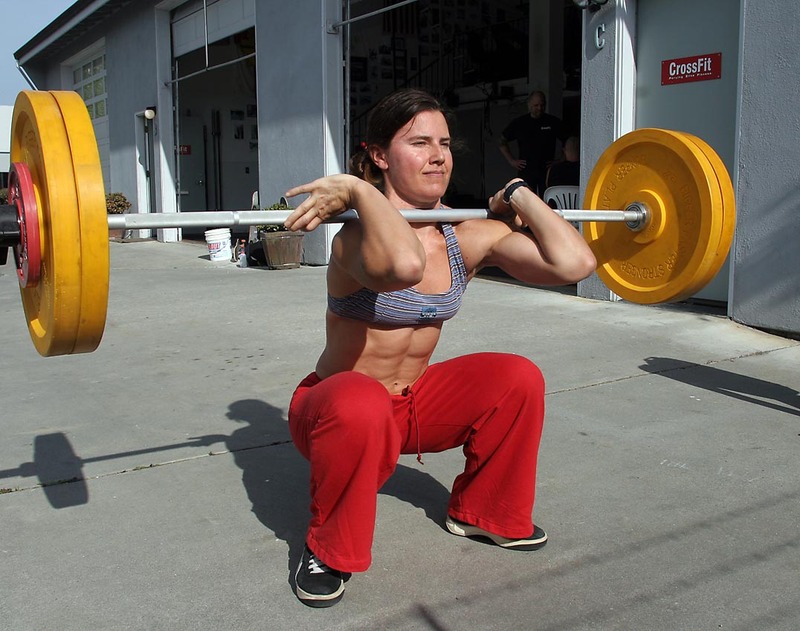Eccentric training has been a mainstay of strength and conditioning for awhile. I like to use it with track and field athletes to help them become stronger when they need to be able to maintain their posture (during levering for jumps and throws or during footstrike for sprints). However, it’s possible that this type of training may have more application than that with sports strength and conditioning.
Munger et al conducted a study to determine the impact of eccentric overload on front squat performance. The authors studied resistance trained men who could front squat a minimum of 128% of bodyweight. In this study, the subjects maxed out on the front squat. They then did three eccentric testing conditions (3 second descent, 2 reps on each condition): front squats with 105% of maximum, 110% of maximum, and 120% of maximum. After each eccentric rep the weights were released so that the concentric phase of the lift was performed with 90% of maximum. Front squats were done on a force platform with a velocity transducer attached to the barbell.
Results:
- Peak velocity on the concentric part of the lift increased as the eccentric load increased. It increased by 3% at 105%, 5% at 110%, and over 7% at 120%.
- Peak power increased on the concentric part of the lift as the eccentric load increased. It increased by almost .2% at 105%, almost 9.3% at 110%, and over 10% at 120%.
- Ground reaction force increased on the concentric part of the lift as the eccentric load increased. It increased by about 2% at 105%, over 4% at 110%, and over 5% at 120%.
- Rate of force development during the concentric phase had an inverse relationship with eccentric load. It increased by almost 29% at 105%, increased by about 22% at 110%, and increased by almost 12% at 120%.
Eccentric loading on the front squat increase the peak velocity, peak power, and ground reaction force of the concentric part of the lifts. These increases were impacted by the amount of eccentric loading (i.e. greater eccentric loading had a more positive effect on the variables). The only exception was with rate of force development, which declined as the eccentric loading increased.
Now, it’s a preliminary study only looking at the front squat. But, if this is true across exercises then it has some interesting implications. First, it’s possible that this may have a post-activation-potentiation effect on performance. For example, some eccentric squats prior to jumping events. Second, this could certainly be a tool during a strength or a power phase of training. Third, there’s some science fiction applications to sports performance. For example, if you could perform some eccentric “winds” on the shot put or discuss prior to the actual throw with heavier-than-normal implements, would that have a positive impact on performance?
It’s not the last word in this, but it’s a great study with some really interesting implications!
Munger, C.N., Archer, D.C., Leyva, W.D., Wong, M.A., Coburn, J.W., Costa, P.B., and Brown, L.E. (2017). Acute effects of eccentric overload on concentric front squat performance. Journal of Strength and Conditioning Research, 31(5): 1192-1197.


